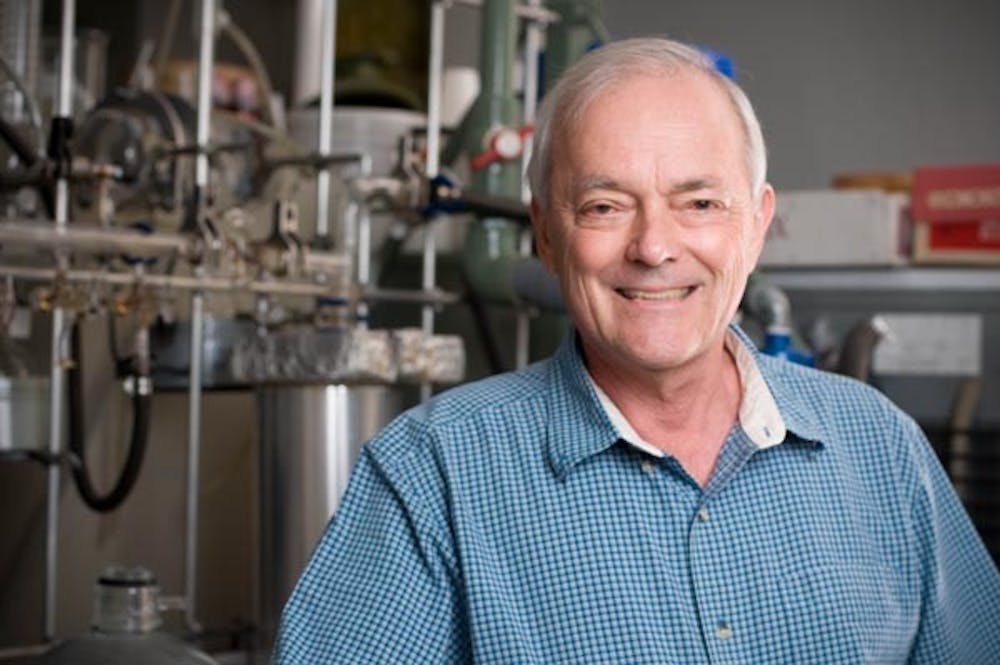Researchers at ASU are using nature as their model for developing an alternative energy source to fossil fuel.
Scientists at the Center for Bio-Inspired Solar Fuel Production, which received more than $14 million in stimulus money from the federal government for the project, are looking for a way to convert the sun’s rays into an efficient energy source.
To accomplish their goal, they have turned to plants.
Plants use photosynthesis, which is the process where plants use the sun’s energy to convert carbon dioxide gas into sugars, which the plants store as a chemical fuel, said Devens Gust, the director of the center.
He added that the goal is to replicate the process of photosynthesis artificially.
“We’re using photosynthesis as a blueprint,” Gust said.
The center formed in 2009 when the project began. The project and center are currently funded through 2014, Gust said. The scientists conduct their research at various labs across the Tempe campus.
After a year of research, the center is starting to refine its goals.
“The whole world runs off of energy from photosynthesis,” Gust said.
He added that the sun is the most attractive energy source in the world, since it is essentially an inexhaustible energy supply and no cost is associated with it.
While plants convert carbon dioxide into sugars through photosynthesis, the center is currently using solar rays to convert water into energy-storing hydrogen gas, Gust said.
The process works by separating water into its two chemical components, oxygen and hydrogen gas. The hydrogen gas can then be stored, Gust said.
He said this hydrogen gas can then either be burned as a fuel or more efficiently be used in a fuel cell. Fuel cells take the energy that is released from the reaction of hydrogen and oxygen and convert it to electricity.
“Humans use energy at a constant rate of 14 Terawatts, which is a huge amount of energy,” Gust said. This energy is always being used, every second of every day.
He said 14 Terawatts is the same amount of energy 140 billion 100-watt light bulbs would use to constantly burn.
“If you want to replace that power with something else, you have to find another energy source that can produce at that rate,”Gust said. “There’s only one practical source, and that’s the sun.”
Gust added that the sun constantly puts out 12,000 Terawatts of energy, which dwarfs humans’ energy use levels.
Solar energy is spread over the entire light side of the Earth at once, Gust said. That is why it’s essential to have a way to store and transfer the energy, since it’s not concentrated in the areas that need it, he said.
Cities have a very high demand for energy, and they need to receive additional energy from rural areas.
Essential to the process of breaking down the water used in the reaction are efficient catalysts to accelerate chemical reactions, Gust said.
One of the primary goals of the project is to find effective catalysts, Gust said.
Ben Sherman, a chemistry graduate student, is working at the center to find a good catalyst for the reaction.
“A lot of the catalysts we have now don’t work very well,” Sherman said.
Scientists at the center are already able to separate hydrogen from water using an iridium-based catalyst . However, iridium is not very efficient since it is the least abundant naturally occurring element on the planet, Gust said.
Researchers are currently looking at manganese, which is the element plants use in photosynthesis and is much more abundant than iridium.
“We want to mimic photosynthesis,” Sherman said.
This project is important to ASU students because it affects their future, Gust said.
“Theirs is the generation that will feel the effects of our lack of fossil fuels,” he said. “We’re going to run out eventually.”
The center was also created for educational purposes, Gust said. It trains students how to find new energy sources for the future when fossil fuel is no longer a viable option.
Giovanna Ghirlanda, an associate professor of chemistry at ASU and one of the 11 faculty members overseeing the project, also emphasized the educational aspect.
She added how each scientist is able to get experience in different areas of need, instead of being limited to one task, like a specific field of chemistry or biology.
“It’s a unique educational environment,” Ghirlanda said. “We’re training the workforce of the future. This project is important for everybody.”
Reach the reporter at alex.ferri@asu.edu





